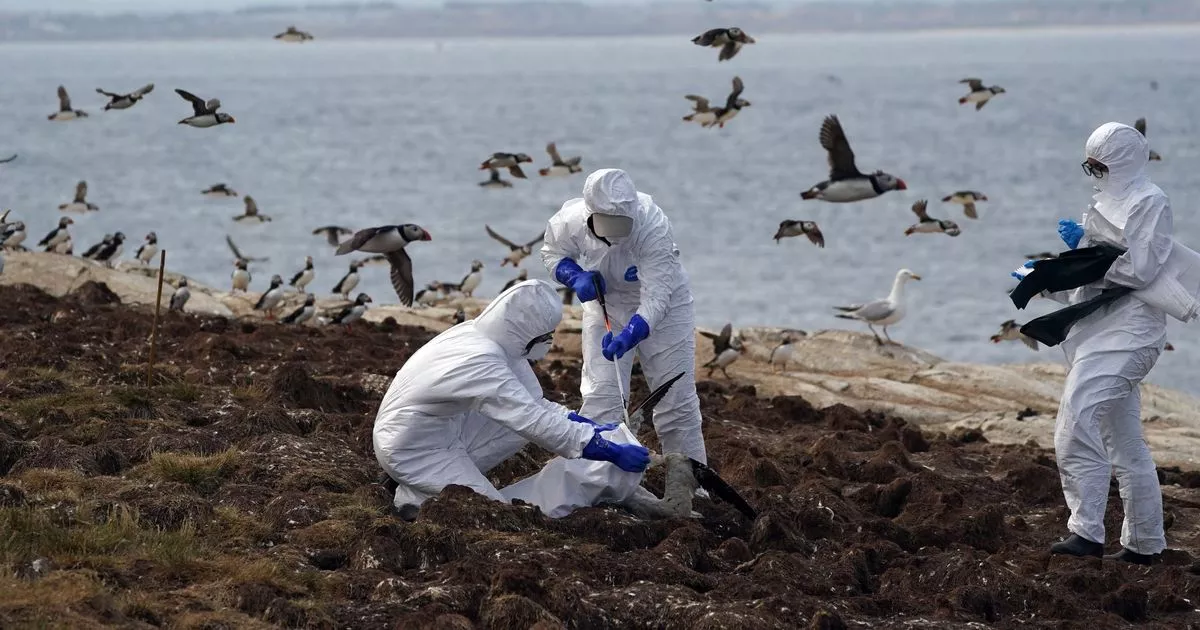





Copyright infringement not intended
Picture Courtesy: https://www.walesonline.co.uk/news/uk-news/unprecedented-bird-flu-outbreak-leads-24896156
Context: A bird flu outbreak caused by the H5N1 variant of the avian influenza virus was reported in Andhra Pradesh’s Nellore district.
Details
|
About H5N1 |
|
|
Type |
Subtype of the Influenza A virus |
|
Cause |
Highly pathogenic avian influenza (HPAI) |
|
Affected Species |
Primarily birds (wild and domestic), but can also infect mammals and humans |
|
Transmission |
Primarily through direct contact with infected birds or their secretions; limited human-to-human transmission |
|
Symptoms in Birds |
Sudden death, respiratory distress, lack of appetite, neurological signs |
|
Symptoms in Humans |
Fever, cough, sore throat, muscle aches, diarrhoea, pneumonia, neurological changes |
|
Mortality Rate |
High in birds (up to 100%), around 60% in humans |
|
Current Global Situation |
Widespread in wild birds, sporadic outbreaks in poultry, rare human cases |
|
Public Health Risk |
Currently considered low, but continuous surveillance is crucial due to the potential for mutation |
|
Prevention in Birds |
Biosecurity measures, vaccination programs, culling of infected flocks |
|
Prevention in Humans |
Avoid close contact with infected birds, wear protective gear when handling poultry, practice good hygiene |
|
Treatment in Humans |
Antiviral medications, supportive care |
|
Vaccine |
Vaccines are used to protect poultry flocks, but no licensed vaccine for humans exists yet |
|
Future Concerns |
Potential for mutation or reassortment leading to increased human-to-human transmission |
Must Read Articles:
BIRD FLU: https://www.iasgyan.in/daily-current-affairs/bird-flu-30
|
PRACTICE QUESTION Q. One-Health is an important approach to managing H5N1. What aspect of One-Health is NOT directly relevant to H5N1 control? A) Understanding the ecological factors influencing virus transmission in birds. B) Strengthening veterinary and human public health systems globally. C) Promoting responsible antibiotic use in animal agriculture. D) Developing effective vaccines and treatments for both humans and animals. Answer: Explanation: One-Health is an approach that recognizes the interconnectedness of human, animal, and environmental health, aiming to address health issues holistically. While responsible antibiotic use in animal agriculture is certainly important for addressing antibiotic resistance and overall public health, it is not directly related to controlling the transmission and spread of the H5N1 avian influenza virus. Understanding the ecological factors influencing virus transmission in birds (option A), strengthening veterinary and human public health systems globally (option B), and developing effective vaccines and treatments for both humans and animals (option D) are all directly relevant to controlling H5N1 as they focus on understanding the virus, improving surveillance and response capabilities, and developing preventive measures such as vaccines and treatments. |











© 2025 iasgyan. All right reserved